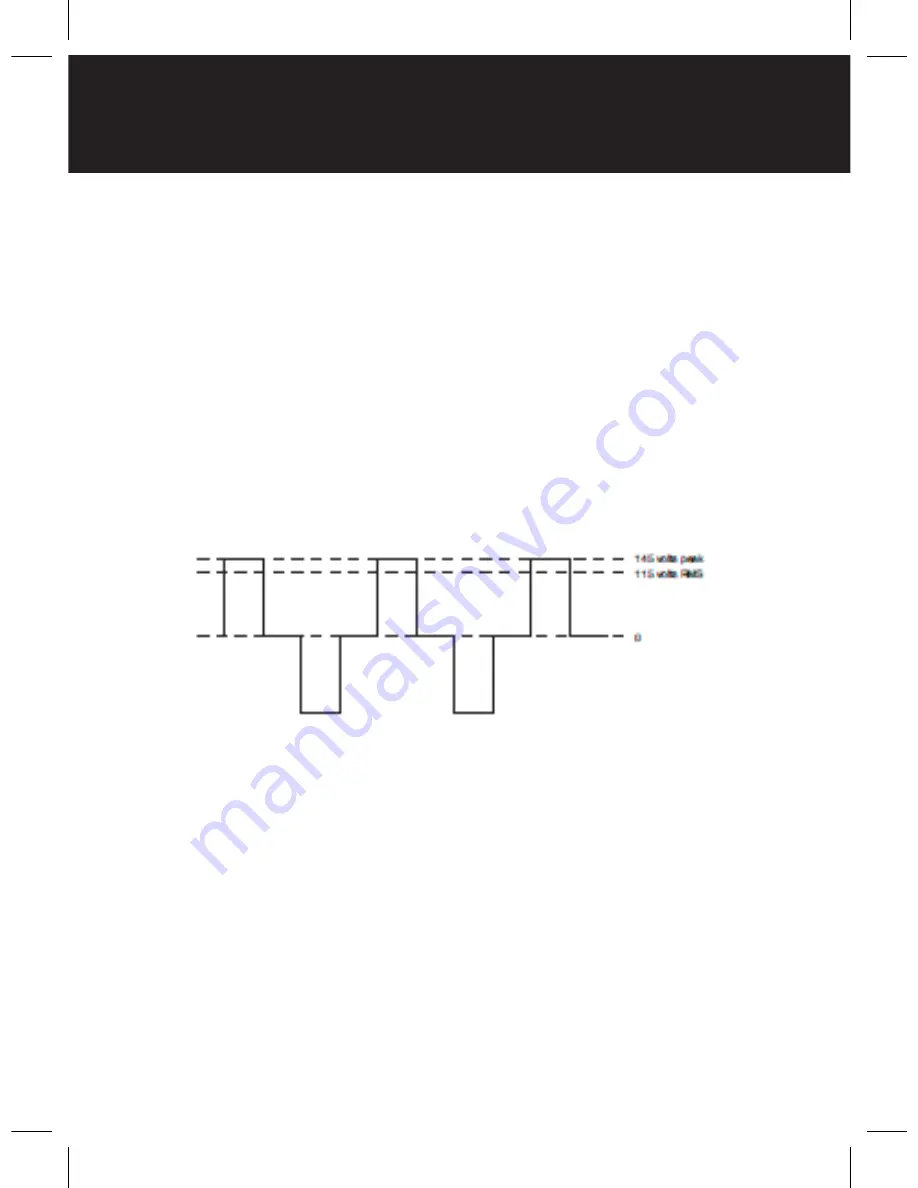
20
Whistler inverters work in two stages. During the first stage,
the DC to DC converter increases the DC input voltage from
the power source (e.g. a 12 volt battery) to 145 volts DC. In the
second stage, the high voltage DC is converted to 115 volts
(60 Hz AC) using advanced power MOSFET transistors in a full
bridge configuration. The result is excellent overload capability
and the capacity to operate difficult reactive loads. The output
waveform resulting from these conversions is a “quasi-sine
wave” or a “modified sine wave” as shown on below.
This stepped waveform is similar to the power generated by
utilities and has a broad range of applications.
The modified sine wave produced by the Inverter
The modified sine wave produced by your Whistler inverter has
a root mean square (RMS) voltage of 115 volts. The majority of AC
voltmeters measure RMS voltage and assume that the measured
waveform will be a pure sine wave.
OPERATING PRINCIPLES










































